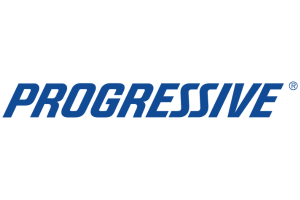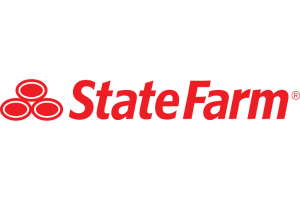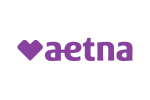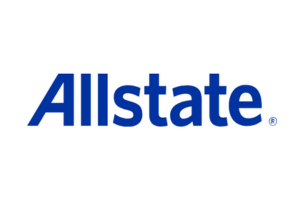What is Subsidized coverage?
Learn about the latest updates in Subsidized Coverage, exploring how government assistance can help individuals access affordable healthcare options. Discover the key benefits and eligibility criteria in this insightful article.
Read more Secured with SHA-256 Encryption






Find the Lowest Car Insurance Rates Today
Quote’s drivers have found rates as low as $42/month in the last few days!




Table of Contents
Table of Contents


Insurance Content Managing Editor
Daniel S. Young began his professional career as chief editor of The Chanticleer, a Jacksonville State University newspaper. He also contributed to The Anniston Star, a local newspaper in Alabama. Daniel holds a BA in Communication and is pursuing an MA in Journalism & Media Studies at the University of Alabama. With a strong desire to help others protect their investments, Daniel has writt...
Daniel S. Young


Licensed Insurance Producer
Dani Best has been a licensed insurance producer for nearly 10 years. Dani began her insurance career in a sales role with State Farm in 2014. During her time in sales, she graduated with her Bachelors in Psychology from Capella University and is currently earning her Masters in Marriage and Family Therapy. Since 2014, Dani has held and maintains licenses in Life, Disability, Property, and Casualt...
Dani Best
Updated January 2025
Subsidized coverage refers to a form of financial assistance provided by the government to individuals or households to help them afford certain essential services, such as healthcare, housing, or food. This type of coverage aims to support those who may have limited financial resources or who face specific challenges in accessing these services independently. By reducing the cost burden, subsidized coverage aims to ensure that everyone has access to basic necessities and essential services.
Understanding the Concept of Subsidized Coverage
When we talk about subsidized coverage, we refer to various forms of financial aid that individuals and families can receive from the government to help them afford specific goods or services. This assistance can be in the form of direct payments, tax credits, or subsidies. Subsidized coverage plays a crucial role in addressing inequality and promoting social welfare. It is based on the principle that everyone should have access to the resources needed to live a dignified life.
Definition of Subsidized Coverage
Subsidized coverage is a financial support mechanism provided by governments to help individuals and families afford essential services or goods. These services may include healthcare, housing, or food assistance. Subsidies are designed to reduce the financial burden on individuals who may have limited income or face specific challenges in accessing these necessities without assistance.
For example, in the healthcare sector, subsidized coverage can take the form of government-funded health insurance programs, such as Medicaid or the Children’s Health Insurance Program (CHIP). These programs provide low-cost or free health coverage to eligible individuals and families who meet certain income requirements. By subsidizing the cost of healthcare, these programs ensure that individuals have access to necessary medical services, medications, and preventive care, regardless of their financial situation.
In the realm of housing, subsidized coverage can manifest as rental assistance programs, such as Section 8. These programs help low-income individuals and families afford safe and decent housing by providing vouchers that cover a portion of their rent. This assistance not only helps individuals secure stable housing but also prevents homelessness and improves overall living conditions.
The Importance of Subsidized Coverage
Subsidized coverage is essential in ensuring equal access to basic necessities. It helps bridge the affordability gap and reduces disparities in society. By providing financial aid, subsidized coverage makes it possible for individuals and families to access services and goods that they otherwise may not be able to afford. This support is particularly crucial for vulnerable populations, such as low-income families, individuals with disabilities, or those who face other socioeconomic challenges.
Moreover, subsidized coverage not only addresses immediate needs but also contributes to long-term social and economic benefits. When individuals have access to essential services like healthcare and housing, they are more likely to lead healthier and more productive lives. This, in turn, can positively impact their overall well-being, educational attainment, and employment opportunities.
Furthermore, subsidized coverage can also have a positive effect on local economies. By providing financial aid to individuals and families, governments stimulate consumer spending, which can boost businesses and create jobs. Additionally, by ensuring that everyone has access to basic necessities, subsidized coverage helps reduce the strain on public resources, such as emergency rooms or homeless shelters, ultimately leading to cost savings for both individuals and society as a whole.
In conclusion, subsidized coverage is a vital tool in promoting social equality and improving the quality of life for individuals and families. By providing financial assistance, governments help bridge the affordability gap and ensure that everyone has access to essential services and goods. This support not only addresses immediate needs but also contributes to long-term social and economic benefits. Subsidized coverage plays a crucial role in creating a more equitable society where everyone has the opportunity to live a dignified life.
Free Health Insurance Comparison
Compare Quotes From Top Companies and Save
Secured with SHA-256 Encryption
The Different Types of Subsidized Coverage
Subsidized coverage varies across different countries and the specific needs of their population. Here are some common types of subsidized coverage:
Health Insurance Subsidies
Health insurance subsidies are aimed at helping individuals and families afford health coverage. In countries with a public healthcare system, these subsidies may cover the cost of insurance premiums or reduce out-of-pocket expenses for medical services. Health insurance subsidies can be income-based, with the government providing financial assistance to those with lower income levels.
For example, in Country A, individuals whose income falls below a certain threshold are eligible for health insurance subsidies. These subsidies are designed to ensure that even those with limited financial means can access quality healthcare services. By reducing the financial burden associated with health insurance, individuals and families can prioritize their health without worrying about the cost.
Additionally, some countries offer specific health insurance subsidies for vulnerable populations, such as children, pregnant women, or individuals with chronic illnesses. These targeted subsidies aim to address the unique healthcare needs of these groups and ensure they receive the necessary medical care.
Housing Subsidies
Housing subsidies help make housing more affordable for individuals and families. These subsidies can take various forms, such as rental assistance, low-cost housing programs, or housing vouchers. By reducing the financial burden of housing costs, individuals and families can have access to safe and secure homes, even with limited financial means.
In Country B, the government provides rental assistance to low-income individuals and families. This assistance ensures that they can afford decent housing in the private rental market. The subsidies cover a portion of the rent, making it more affordable and preventing homelessness.
Furthermore, some countries have implemented low-cost housing programs where the government constructs affordable housing units. These units are then rented out at reduced rates to eligible individuals and families. This approach not only provides affordable housing options but also contributes to the development of sustainable communities.
Food Assistance Subsidies
Food assistance subsidies aim to ensure that everyone has access to adequate nutrition. Programs such as food stamps or food vouchers provide financial aid to individuals and families, enabling them to purchase essential groceries. These subsidies are crucial in combating food insecurity and ensuring that no one goes hungry.
In Country C, the government operates a food stamp program that provides eligible individuals with a monthly allowance to purchase food items. This program is means-tested, meaning that individuals with lower incomes receive higher amounts of assistance. The goal is to alleviate the financial strain of purchasing food and promote the well-being of individuals and families.
Additionally, some countries have implemented innovative food assistance programs that go beyond traditional subsidies. For example, in Country D, there are community gardens where individuals and families can grow their own food. The government provides resources and support to establish and maintain these gardens, ensuring that individuals have access to fresh and nutritious produce.
By offering various types of subsidized coverage, countries strive to create a more equitable society where individuals and families can meet their basic needs without facing excessive financial burdens. These programs not only provide immediate relief but also contribute to long-term social and economic well-being.
How Subsidized Coverage Works
Understanding how subsidized coverage works is essential for individuals who may be eligible for assistance. Let’s delve into the key aspects:
Subsidized coverage refers to a government program that provides financial assistance to individuals who are unable to afford healthcare or insurance on their own. These programs aim to ensure that everyone has access to necessary medical services, regardless of their income level or socioeconomic status.
Eligibility for subsidized coverage varies depending on the specific program and the country in which it is implemented. Generally, eligibility is based on factors such as income level, household size, and other socioeconomic criteria. Governments set specific criteria to identify those who need assistance the most and are likely to benefit from subsidized coverage.
Applying for subsidized coverage usually involves submitting an application form to the appropriate government agency. This form may require individuals to provide information about their income, household size, and any specific circumstances that may affect their eligibility. The government then assesses the information provided to determine whether the individual qualifies for the assistance program.
Once an individual is deemed eligible for subsidized coverage, they can enjoy a range of benefits. These benefits may include reduced premiums, lower out-of-pocket costs for medical services, and access to a wider network of healthcare providers. The specific benefits offered can vary depending on the program and the level of assistance provided.
The role of the government in implementing and overseeing subsidized coverage programs is crucial. Governments are responsible for setting eligibility criteria, allocating resources, and managing the application process. They work closely with various organizations and agencies to ensure that eligible individuals receive the support they need.
Furthermore, governments strive to create a fair and accessible system that distributes subsidized coverage according to the needs of the population. They continuously monitor and evaluate the effectiveness of these programs to ensure that they are reaching the intended beneficiaries and making a positive impact on healthcare accessibility.
In addition to financial assistance, governments also invest in public health initiatives and education to promote preventive care and overall well-being. These efforts aim to reduce the need for costly medical interventions and improve the overall health of the population.
Overall, subsidized coverage plays a vital role in ensuring that everyone has access to affordable healthcare. By providing financial assistance and support, governments strive to bridge the gap between those who can afford healthcare and those who cannot. Through these programs, individuals can receive the medical care they need without facing financial hardship.
Benefits and Drawbacks of Subsidized Coverage
While subsidized coverage offers important benefits, it is not without challenges. Let’s examine both the advantages and potential disadvantages:
Advantages of Subsidized Coverage
Subsidized coverage provides crucial support and benefits to individuals and families who may otherwise struggle to afford essential services. It helps reduce financial burdens, ensure access to healthcare, housing, and food, and contributes to addressing social inequality. By providing financial assistance to those in need, subsidized coverage promotes social welfare and ensures that basic necessities are within reach.
One of the key advantages of subsidized coverage is its ability to improve healthcare outcomes. When individuals have access to affordable healthcare, they are more likely to seek preventative care and early treatment, leading to better overall health and reduced healthcare costs in the long run. This not only benefits the individuals receiving subsidized coverage but also has positive effects on the entire healthcare system.
Additionally, subsidized coverage can have a significant impact on poverty reduction. By alleviating the financial burden of essential services, individuals and families can allocate their limited resources to other areas such as education and employment. This can help break the cycle of poverty and create opportunities for upward mobility.
Potential Disadvantages of Subsidized Coverage
Subsidized coverage programs may face potential drawbacks. Challenges can include limited funding, administrative complexities, and potential abuse of the system. Some critics argue that excessive reliance on subsidized coverage might discourage self-sufficiency and create dependency on government programs. However, these potential disadvantages can often be mitigated through effective program design, monitoring, and evaluation.
One of the main concerns regarding subsidized coverage is the strain it can put on limited funding. As the demand for subsidized coverage increases, there may not be enough resources to meet everyone’s needs. This can result in long waiting lists or reduced benefits, which can be detrimental to individuals who rely on subsidized coverage for their essential services.
Administrative complexities can also pose challenges for subsidized coverage programs. The process of determining eligibility, verifying income, and managing the distribution of subsidies can be time-consuming and prone to errors. It requires a robust system and trained personnel to ensure that the right individuals receive the appropriate level of assistance.
Another potential drawback is the possibility of abuse within the system. Some individuals may attempt to exploit subsidized coverage programs by providing false information or misusing the benefits. This can strain the resources available for those who genuinely need assistance and can undermine the effectiveness of the program.
Despite these potential disadvantages, it is important to recognize that subsidized coverage plays a vital role in promoting social welfare and addressing inequality. By implementing proper safeguards, such as regular program evaluations and strict eligibility criteria, the potential drawbacks can be minimized, allowing subsidized coverage to continue benefiting those in need.
Free Health Insurance Comparison
Compare Quotes From Top Companies and Save
Secured with SHA-256 Encryption
Subsidized Coverage in Different Countries
Subsidized coverage programs vary across different countries based on their specific social welfare policies. Let’s take a closer look at how subsidized coverage functions in the United States, the United Kingdom, and Canada:
Subsidized Coverage in the United States
In the United States, subsidized coverage is provided through various programs, including Medicaid, the Children’s Health Insurance Program (CHIP), and the Affordable Care Act subsidies. These programs aim to provide affordable healthcare coverage for low-income individuals and families. Eligibility and benefits vary depending on income level and other factors.
Subsidized Coverage in the United Kingdom
The United Kingdom offers subsidized coverage through its National Health Service (NHS), which provides universal healthcare to all residents. This publicly funded system ensures that everyone has access to essential medical services without facing financial barriers. The NHS is financed through general taxation, ensuring that healthcare is free at the point of service for all UK residents.
Subsidized Coverage in Canada
In Canada, subsidized coverage is primarily provided through the country’s publicly funded healthcare system. The Canadian universal healthcare system, known as Medicare, ensures that all residents have access to medically necessary healthcare services regardless of their ability to pay. This system is funded through taxes and administered at the provincial and territorial levels.
In conclusion, subsidized coverage plays a vital role in supporting individuals and families who may face financial challenges or other barriers to accessing essential services. These programs, provided by the government, aim to reduce inequality, enhance social welfare, and ensure that everyone has access to basic necessities. By offering financial assistance, subsidized coverage promotes inclusivity and provides a safety net for those who need it most.
Frequently Asked Questions
What is subsidized coverage?
Subsidized coverage refers to insurance plans that are partially or fully paid for by the government or another organization. These plans are designed to make health insurance more affordable for individuals and families with lower incomes.
Who is eligible for subsidized coverage?
Eligibility for subsidized coverage varies depending on the specific program or insurance marketplace. Generally, individuals and families with lower incomes who meet certain criteria can qualify for subsidized coverage. This may include factors such as household size, income level, and citizenship status.
What are the benefits of subsidized coverage?
Subsidized coverage provides several benefits, including reduced monthly premiums, lower out-of-pocket costs for healthcare services, access to essential health benefits, and financial protection from high medical expenses. It helps individuals and families afford necessary healthcare without facing significant financial burdens.
How can I apply for subsidized coverage?
To apply for subsidized coverage, you can visit your state’s health insurance marketplace or the federal marketplace, depending on where you reside. You will need to provide information about your household income, family size, and other relevant details. The marketplace will then determine if you are eligible for subsidies and guide you through the enrollment process.
Are there different types of subsidized coverage?
Yes, there are different types of subsidized coverage available. These may include Medicaid, the Children’s Health Insurance Program (CHIP), and subsidized plans offered through the Affordable Care Act (ACA) marketplaces. Each program has its own eligibility criteria and benefits.
What happens if my income changes while on subsidized coverage?
If your income changes while on subsidized coverage, it is important to report the change to your insurance marketplace as soon as possible. Depending on the change, you may become eligible for different subsidy levels or programs. Failing to report income changes promptly could result in incorrect subsidy amounts or potential penalties.
Get a FREE Quote in Minutes
Insurance rates change constantly — we help you stay ahead by making it easy to compare top options and save.

